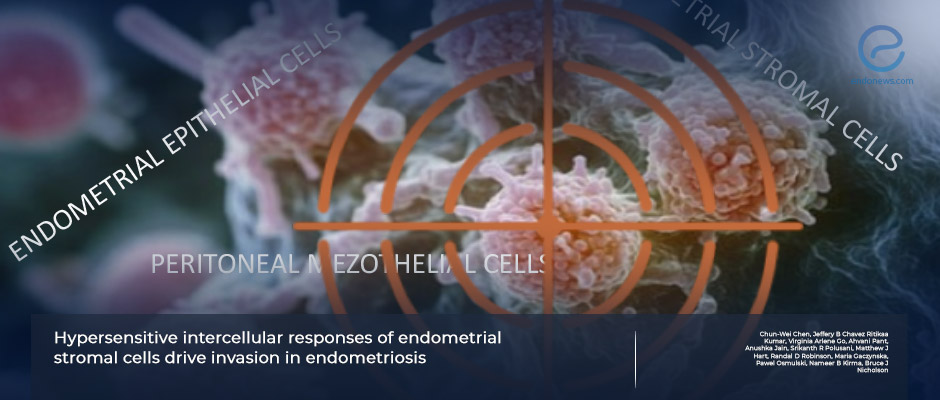Unique features of endometrial cells in endometriosis
Feb 20, 2025
New findings supportive of endometriosis to be an invasive disorder
Key Points
Highlights:
- While most research on endometriosis has focused on its consequences, such as inflammation and fertility, less attention has been given to the causes of lesion formation.
- Similar to metastasis, this likely involves enhanced migration, epithelial-to-mesenchymal transition, and intercellular interactions, including adhesion and gap junction formation that disrupt tissue barriers.
Importance:
- Novel research could yield important clues on the role of endometrial cells in allowing endometriosis to be an invasive disorder.
What's done here:
- Primary endometrial stromal (ESC) and epithelial cells(EEC) isolated from biopsies of women with and without endometriosis (n=22 for control and endometriosis groups).
- Research methods included Cell culture, trans-mesothelial invasion assay, Gap junction intercellular coupling(GJIC) and blockade, motility assays, evaluation of cell to cell adhesion and mesothelial integrity by using appropriate techniques.
Main key features:
- Endometrial stromal (ESCs) of endometriosis patients yield greater invasiveness across mesothelial monolayers than cells from healthy women, which is further enhanced by the presence of endometrial epithelial cells.
- ESC and EEC mixtures from endometriosis patients exhibit increased invasiveness, with ESCs being the primary invasive cells.
- ESCs from endometriosis patients demonstrate higher inherent motility.
- Peritoneal mesothelial cells further enhance the motility of ESCs.
- Peritoneal mesothelial cells induce gap junction intercellular coupling (GJIC) with ESCs.
- GJIC is essential for the invasion of ESCs across the peritoneal mesothelium.
Lay Summary
Researchers from the University of Texas, San Antonio, have published a detailed study on the properties of endometrial cell components in relation to endometriosis, entitled "Hypersensitive intercellular responses of endometrial stromal cells drive invasion in endometriosis", in the scientific journal eLife.
Research Source: https://pubmed.ncbi.nlm.nih.gov/39660704/
endometrial cells invasive properties pathogenesis of endometriosis

